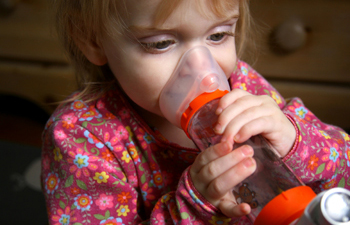Examining Air Pollution and Chronic Respiratory Problems in Children
Clients
University of Southern California (USC)
National Institute of Environmental Health Sciences
The Children's Health Study was initiated in 1992 to determine whether long-term exposure to ambient ozone, particulate matter (PM), nitrogen dioxide (NO<sub>2</sub>) and strong acid vapor is responsible for chronic respiratory problems in children in Southern California. It has expanded to include adverse birth outcomes, cardiovascular health effects, and association with traffic-related pollutants.
<br>
This multi-year effort involves examining children’s exposure to air pollution in 16 communities located throughout Southern California. Sonoma Technology scientists are working collaboratively with researchers at USC’s Keck School of Medicine to perform health exposure assessments for approximately 12,000 study participants. Sonoma Technology staff helped design the study and implement the air monitoring network.
<br>
The children's exposure to air pollution is assessed through ambient monitoring, personal sampling, residential monitoring, school-based monitoring, time-activity surveys, housing questionnaires, and exposure modeling. Special analyses include neighborhood-scale modeling of the children's exposure to on-road mobile source emissions. Sonoma Technology is responsible for quality-assuring all exposure-related data used in the study and performing statistical analysis of the temporal and spatial characteristics of ambient pollution levels in the communities. <br>
Several key findings resulted from the Children’s Health Study:<ul>
<li>Air pollution exposure reduces lung function growth in children. Children exposed to higher levels of PM, NO<sub>2</sub>, acid vapor, and elemental carbon, had significantly lower lung function at age 18, an age when the lungs are nearly mature and lung function deficits are unlikely to be reversed.</li>
<li>Traffic-related air pollution reduces lung function at age 18 years for children living within 500 m from a freeway, compared to those living farther away. Local freeway traffic effects on children's lung development are independent of regional air quality effects and could result in important deficits in attained lung function in later life.</li>
<li>Children exposed to higher levels of outdoor NO<sub>2</sub> and in closer residential proximity to freeways have greater prevalence of asthma.</li>
<li>Early life exposure to traffic-related pollution at residences within 75 m of major roads increases the risk of asthma and wheezing in children ages 5-7.</li>
<li>Children exposed to higher levels of traffic-related air pollution have increased risk of new-onset asthma.</li>
<li>Children exposed to higher ozone levels have significantly more school absences due to respiratory illness.</li>
<li>Children with asthma who are exposed to higher concentrations of PM are much more likely to develop bronchitis.</li>
<li>Children who moved away from study communities had increased lung development if the new communities had lower PM levels, and had decreased lung development if the new communities had higher PM levels.</li>
<br>
This multi-year effort involves examining children’s exposure to air pollution in 16 communities located throughout Southern California. Sonoma Technology scientists are working collaboratively with researchers at USC’s Keck School of Medicine to perform health exposure assessments for approximately 12,000 study participants. Sonoma Technology staff helped design the study and implement the air monitoring network.
<br>
The children's exposure to air pollution is assessed through ambient monitoring, personal sampling, residential monitoring, school-based monitoring, time-activity surveys, housing questionnaires, and exposure modeling. Special analyses include neighborhood-scale modeling of the children's exposure to on-road mobile source emissions. Sonoma Technology is responsible for quality-assuring all exposure-related data used in the study and performing statistical analysis of the temporal and spatial characteristics of ambient pollution levels in the communities. <br>
Several key findings resulted from the Children’s Health Study:<ul>
<li>Air pollution exposure reduces lung function growth in children. Children exposed to higher levels of PM, NO<sub>2</sub>, acid vapor, and elemental carbon, had significantly lower lung function at age 18, an age when the lungs are nearly mature and lung function deficits are unlikely to be reversed.</li>
<li>Traffic-related air pollution reduces lung function at age 18 years for children living within 500 m from a freeway, compared to those living farther away. Local freeway traffic effects on children's lung development are independent of regional air quality effects and could result in important deficits in attained lung function in later life.</li>
<li>Children exposed to higher levels of outdoor NO<sub>2</sub> and in closer residential proximity to freeways have greater prevalence of asthma.</li>
<li>Early life exposure to traffic-related pollution at residences within 75 m of major roads increases the risk of asthma and wheezing in children ages 5-7.</li>
<li>Children exposed to higher levels of traffic-related air pollution have increased risk of new-onset asthma.</li>
<li>Children exposed to higher ozone levels have significantly more school absences due to respiratory illness.</li>
<li>Children with asthma who are exposed to higher concentrations of PM are much more likely to develop bronchitis.</li>
<li>Children who moved away from study communities had increased lung development if the new communities had lower PM levels, and had decreased lung development if the new communities had higher PM levels.</li>
Related Links:
Air Quality
Applied Research
Community Monitoring
Exposure
Health


Frederick W. Lurmann

Frederick
W.
Lurmann
Manager of Exposure Assessment Studies
fred@sonomatech.com
/sites/default/files/2023-02/FWLres.pdf
